This time I wove up a set of diamonds in various types of grid, combining it with a dye pattern of blocks:
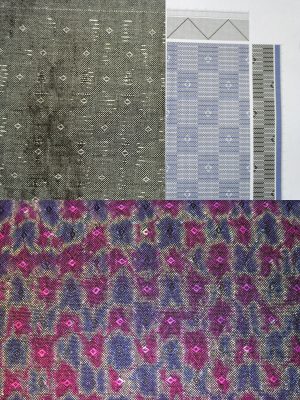
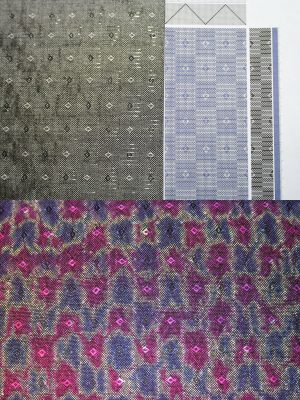
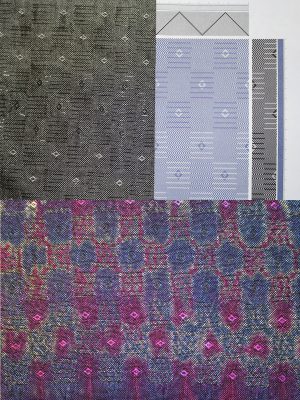
I’m not especially thrilled with the results of this experiment, as the diamonds really aren’t very visible in real life (the camera flash makes them stand out a LOT more than they do in natural light), and also because I feel they’re disruptive when they do. The stark grid of the diamonds, and the strong geometric shape of the diamonds, clashes with the irregular and soft “lines” of the dye pattern.
Nonetheless I am learning things from this warp. After looking through my dye samples again, I’m concluding the following:
- It’s better if the pattern woven into the cloth is more fluid than geometric – because otherwise the irregular, shaded borders from shibori will clash with the clean, sharp edges of the woven pattern.
- The more complex the shibori pattern, the simpler the pattern woven into the cloth should be. And vice versa. Otherwise there’s simply too much going on at once.
- Subtle shading with less contrast is more restful to the eye than high-contrast combinations.
As an illustration of all three principles, see this earlier sample, which I thought was more successful than the current batch:
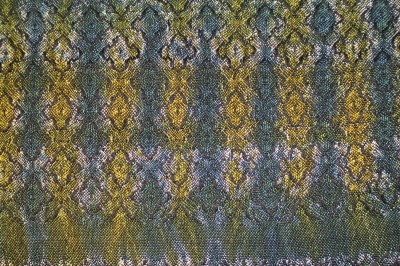
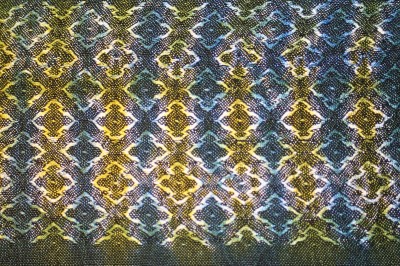
I would say that the top photo (the “bottom” side) is the most successful of the samples I’ve done. The low contrast is restful to the eye and prevents the “busy” pattern from overwhelming the design. (The second photo of the sample has much higher contrast and hence looks busier.) The slightly curvy edge of the diamond pattern works well with the diffuse edges of the shibori pattern, and the shibori pattern is both simple and gradual in shading, complementing the woven pattern without competing with it.
Now, where next? That’s a complex question. I am rapidly coming to the end of my warp, and am battling between the urge to get an actual finished piece out of this 11-yard warp and the desire to keep on experimenting. (Yes, I have just about used up an entire 11-yard warp in sampling!) Compounding things is my guild challenge for this year, which (if I’m going to enter) needs to be woven up this month for the December meeting. Since chocolate season officially starts on Saturday, that gives me four days to weave it, if I’m going to. Which in turn means it must be woven on this warp, since there’s no way I’ll get another warp wound, threaded, etc. in time for the challenge. So I am torn between “weaving something” and continuing to sample.
Unfortunately, I don’t feel any of my woven shibori experiments have been successful enough to weave up into an actual project, so unless I abandon woven shibori, I won’t have a piece I’m satisfied with for the guild challenge. And somehow it feels like cheating to abandon woven shibori for something safer and more familiar.
I think the eventual outcome of all this is that I will not enter the guild challenge, or else will figure out how to convert one of my samples to an “actual project” for entry. I’m so interested in how this woven shibori stuff turns out that I really hate to stop what I’m doing and do something else!
But, you never know.
Off to design class!

You could always keep sampling on the warp, and do the guild challenge if and when something amazing emerges from the further sampling. You never know what surprises the loom gods will throw your way.
(Says the gal who is currently weaving up a plethora of samples, unsure what she’ll make of the fabric, but learning lots and enjoying the process.)